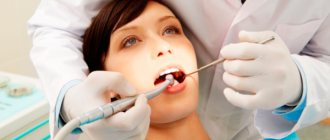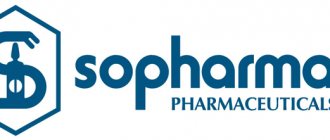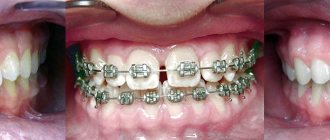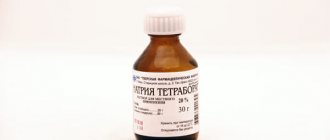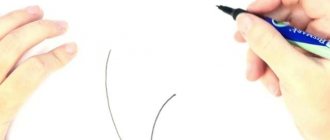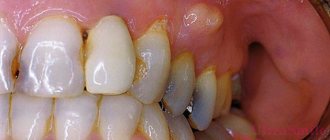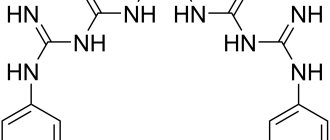Release form and composition
Nimesulide is available in the following forms:
- Tablets (10 pieces in a blister; 1,2 or 3 blisters per package);
- Suspension for oral administration (60 ml in a bottle);
- Gel 0.1%: homogeneous, transparent or almost transparent, yellow (30 g per tube, 1 tube in a cardboard box);
- Powder for preparing a suspension: white to white with a yellowish tint; when dissolved, it forms a white or light yellow suspension with a characteristic lemon odor (2 g per bag; 9 or 30 bags per pack).
Active ingredient: nimesulide (100 mg in 1 tablet; 50 mg in 1 g of powder; 10 mg in 1 ml of suspension; 10 mg in 1 g of gel).
Auxiliary components:
- Tablets: lactose monohydrate, microcrystalline cellulose, magnesium stearate, croscarmellose sodium, calcium hydrogen phosphate dihydrate, sodium lauryl sulfate, talc, hydroxypropylcellulose, aerosil;
- Gel: macrogol 400, carbomer, dimexide, propylene glycol, ethyl alcohol.
Main analogues of nimesulide, release forms
In addition to the generally accepted international name Nimesulide, there are commercial analogues of the drug produced in various countries. Here are some of them:
- Nimesil (BERLIN-CHEMIE (Germany)) – effervescent tablets of 100 mg (10 pieces per package) or granules in sachets (2g/100 mg per bag, 9, 15 or 30 pieces per package) for the preparation of suspension and oral use . The drug nimesil can be produced at factories in Germany, Italy, and Spain.
- Nise (DR. REDDY`S LABORATORIES (India)) – tab. 50 and 100 mg (10, 20 or 100 pieces per package), as well as gel for external use 1%, 20 or 50 g
- Aponil (MEDOCHEMIE (Cyprus)) – tab. 100 mg of nimesulide, 10, 20 and 100 pcs. in pack
- Nimika (IPCA LABORATORIES (India)) – dispersible tablets of 50 and 100 mg (20 pcs. per pack)
- Nimesulide (Borisov ZMP/Belarus) – tab. 100 mg each (20 and 30 pcs per pack)
- Nimulid (PANACEA BIOTEC (India)) – 100 mg, 30 or 100 pcs. packaged
- Nimefast (Rubikon LLC/Belarus) – tablets of 100 mg, 20 and 30 pieces per pack.
In pharmacies, analogues of the drug can also be seen under the names prolide, sulaydin, nemelex, naisulide, nimesubel, nisit, etc. However, the brand names of nimesulide such as nimesil and nise are most often asked and used.
Indications for use
Nimesulide has no effect on the progression of the disease and is intended only for symptomatic therapy (reduction of pain and inflammation at the time of use) of the following conditions/diseases:
- Myalgia;
- Arthralgia;
- Tendinitis;
- Rheumatoid arthritis;
- Bursitis;
- Osteoarthritis;
- Algodismenorrhea;
- Arthritis of various origins;
- Headache and toothache;
- Post-traumatic and postoperative pain.
Contraindications
Absolute:
- Exacerbations of inflammatory bowel diseases (ulcerative colitis, Crohn's disease);
- Active gastrointestinal bleeding;
- Erosive and ulcerative lesions of the duodenal and gastric mucosa;
- Cerebrovascular or other bleeding;
- Chronic heart failure in the stage of decompensation;
- Hemophilia and other bleeding disorders;
- Hepatotoxic reactions when using nimesulide (including in history);
- Liver failure and other active liver diseases;
- Incomplete or complete combination of recurrent polyposis of the paranasal sinuses or nose, bronchial asthma and intolerance (including a history) of acetylsalicylic acid and other NSAIDs;
- Progressive kidney diseases;
- Severe chronic renal failure;
- Confirmed hyperkalemia;
- Concomitant use of other hepatotoxic drugs;
- The period after coronary artery bypass surgery;
- Addiction;
- Alcoholism;
- Pregnancy and breastfeeding period;
- Children under 12 years of age;
- Hypersensitivity to any of the components of the drug.
Relative (the drug should be used with caution to avoid complications):
- Chronic heart failure;
- Cardiac ischemia;
- Cerebrovascular diseases;
- Kidney failure;
- Diabetes;
- Hyperlipidemia/dyslipidemia;
- Peripheral arterial diseases;
- Presence of Helicobacter pylori infection;
- History of the development of ulcerative lesions of the gastrointestinal tract;
- Severe somatic diseases;
- Long-term use of NSAIDs;
- Concomitant use of oral glucocorticosteroids, antiplatelet agents (clopidogrel, acetylsalicylic acid), anticoagulants (warfarin) and selective serotonin reuptake inhibitors (sertraline, fluoxetine, citalopram, paroxetine);
- Elderly age;
- Smoking.
Adverse reactions when taking Nimesulide tablets
When taking pills, you should be aware that they have side effects. These include:
- anemia, in rare cases thrombocytopenia - in relation to blood flow;
- increased sensitivity – in relation to immunity;
- hyperkalemia – in relation to metabolism;
- insomnia, anxiety – in relation to the mental state;
- dizziness – in relation to the vestibular apparatus;
- frequent urination, swelling - in relation to the genitourinary organs;
- respiratory dysfunction – in relation to the respiratory system.
In addition, during treatment with Nimesulide it is necessary to monitor the functions of the renal and digestive systems. Use with caution in elderly and pediatric patients. You should definitely consult a doctor to rule out an overdose or complications in the internal systems.
Taking tablets can only be done with the permission of a doctor after determining the correct dose and duration of use. If you take a large amount of medication and signs of overdose appear, you must provoke a gag reflex, then drink activated charcoal.
In addition, you should familiarize yourself with the interaction of Nimesulide and other tablets and suspensions. When taking medications containing digoxin, phenytoin and other drugs belonging to the NSAID group, the protein bond competes in the body.
Under the influence of Nimesulide, blood clotting is reduced, so simultaneous use with acetylsalicylic acid can provoke bleeding. So this combination is contraindicated.
In addition, Nimesulide tablets are capable of leaching sodium and potassium. For this reason, you should notify your doctor about the medications you are taking so as not to provoke the development of complications.
Directions for use and dosage
Nimesulide is intended for oral administration (tablets, suspension and powder) and externally (gel).
The recommended dose is 100 mg (1 tablet or the appropriate amount of suspension) 2 times a day, preferably after meals. Take enough liquid. The powder should first be dissolved in 80-100 ml of water. The maximum daily dose for adult patients and adolescents 12-18 years old is 200 mg. The duration of treatment is determined individually.
Elderly patients do not require dose adjustment.
Persons with chronic renal failure should reduce the daily dose to 100 mg.
To reduce the risk of side effects, Nimesulide is recommended to be prescribed in the minimum effective dose, preferably for a short period of time. If there is no improvement, treatment should be stopped. The maximum duration of therapy is no more than 15 days.
The drug in gel form is used externally. A strip of gel 3 cm long is applied to the affected area and rubbed in with light movements. Frequency of application – no more than 4 times a day. Nimesulide gel should not be used under a bandage.
Nimesulide - description and action
Nimesulide - drug
, available in various dosage forms. Most often, pharmacies sell tablets, powder, solution, a little less often you can find a suspension or syrup. Among the external products, the range is represented by ointment and gel. The main active ingredient is nimesulide, a substance belonging to the group of sulfonamides.
Nimesulide tablets (100 mg each) with a biconvex shape on one side have a break for division. In addition to the active substance, the composition is represented by the following components:
- magic stearate;
- vegetable oil;
- cellulose;
- sodium docusate;
- lactose monohydrate;
- hyprolose.
The medicine has a low price - for a package of 30 tablets you need to pay 240 rubles. Nimesulide is available in different forms, " Canon
", "
Izvarino Pharma
", "
Ozone
".
The drug is intended to relieve heat, inflammation, pain, swelling - this set of properties allows it to be used for any inflammatory processes. Like other NSAIDs, nimesulide disrupts the release of arachidonic acid, which is a precursor of prostaglandins (inflammatory mediators). After taking the drug, the reactions accompanying inflammation are reduced - pain is reduced, normal capillary permeability is restored, local and general body temperature is returned to normal.
Indications for use
The instructions clearly state what Nimesulide tablets help with - they are used for symptomatic use to reduce pain and inflammation. The drug, like other NSAIDs, does not affect the progression of the underlying disease, therefore it is most often prescribed in conjunction with pathogenetic therapy.
The main indications for use of the drug are as follows:
WE RECOMMEND THE ARTICLE!
Mig tablets are often used for headaches. Read more >>
- arthritis of various origins - rheumatoid, psoriatic, infectious, juvenile, chronic;
- osteoarthritis of the knee, ankle, hip and other joints;
- pain due to osteoporosis;
- osteochondrosis (initial stages, complicated forms);
- myalgia, cervicalgia, arthralgia;
- bursitis, synovitis;
- tendinitis;
- gout.
The drug is prescribed for traumatic pain caused by bruises, sprains, and fractures. It is also indicated for reducing pain after surgery. The tablets are used by women during painful menstruation (algomerorrhea), and for inflammatory gynecological pathologies accompanied by severe pain.
The medicine can be taken at fever against the background of infectious diseases, especially with general poor health.
Tablets help with tooth pain due to caries, pulpitis, tooth extraction, after surgical interventions on the jaws and gums. They are recommended for sore throat, acute respiratory infections, flu, rhinitis, bronchitis, and sinusitis.
Instructions for use
It is better to familiarize yourself with the information before the initial dose - there are a number of features in choosing a dosage form according to age. Tablets can be taken by children over 12 and adults. A single dose should contain 100 mg of the drug, or 1 tablet. You are allowed to drink 2 tablets per day, or 200 mg of Nimesulide. In severe cases, an adult can take up to 400 mg/day, but as a one-time measure.
Persons aged 12-18 years should calculate the maximum daily dose as 5 mg/kg body weight, divided into 2-3 doses, but the standard dosage is 3 mg/kg body weight.
Other dosage forms are taken as follows:
- Powder
. Dissolve the product in water (50-100 ml), take 100 mg of powder twice a day warm. - Suspension
. Give children from 6 years of age 1.5-3 mg/kg body weight per day, divided into 3 doses.
For elderly people, no dose adjustment is necessary; for people with insufficient renal function, the maximum daily dosage is 100 mg. Nimesulide should be taken after meals. Patients prone to gastrointestinal diseases are recommended to first take a drug from the group of proton pump inhibitors. The average course of therapy is 3-7 days; according to strict indications, it can be extended to 15 days.
Side effects
- Digestive system: nausea, vomiting, flatulence, diarrhea, constipation, abdominal pain, tarry stools, stomatitis, gastritis, perforation and/or ulcer of the duodenum or stomach, gastrointestinal bleeding;
- Cardiovascular system: tachycardia, hot flashes, hemorrhages, arterial hypertension;
- Respiratory system: bronchospasm, exacerbation of bronchial asthma, shortness of breath;
- Central nervous system: nervousness, drowsiness, headache, feeling of fear, dizziness, encephalopathy (Reye's syndrome), nightmares;
- Urinary system: hematuria, dysuria, hyperkalemia, edema, renal failure, urinary retention, interstitial nephritis, oliguria;
- Liver and biliary system: jaundice, fulminant hepatitis, cholestasis, hepatitis, increased liver transaminases;
- Hematopoietic system: eosinophilia, pancytopenia, prolongation of bleeding time, anemia, purpura, thrombocytopenia;
- Skin: skin rash, dermatitis, erythema, itching, urticaria, increased sweating, facial swelling, angioedema, Lyell's syndrome (toxic epidermal necrolysis), exudative erythema multiforme;
- Senses: blurred vision;
- Allergic reactions: hypersensitivity and anaphylactoid reactions;
- Other: hypothermia, general weakness.
special instructions
The use of Nimesulide should be discontinued in the following cases:
- Increase in temperature or development of flu-like symptoms while taking the drug;
- The occurrence of ulcers or gastrointestinal bleeding;
- The appearance of symptoms indicating liver damage (eg, vomiting, nausea, anorexia, fatigue, abdominal pain, dark urine);
- Increased levels of liver transaminases;
- Deterioration of kidney function.
When using the drug for more than two weeks, it is necessary to monitor liver function indicators.
In patients with liver cirrhosis or renal failure with hyperbilirubinemia or hypoalbuminemia, the binding of nimesulide is reduced.
Side effects most often develop in elderly patients, so regular monitoring of the condition of patients in this age category is recommended.
The drug may affect female fertility and is not recommended for women planning pregnancy.
If side effects from the sensory organs and the central nervous system develop while using Nimesulide, you should refrain from driving a car or other transport and do not perform work that requires increased attention and quick reaction.
Drug interactions
The drug may reduce the bioavailability of furosemide and compete in the binding of plasma proteins with salicylic acid, fenofibrate and tolbutamide.
Nimesulide is not recommended to be taken simultaneously with diuretics, which have a damaging effect on the hemodynamics of the kidneys.
Unsaturated fatty acids (in physiological concentrations) do not affect the binding of nimesulide to serum albumin.
Furosemide, warfarin, digitoxin and glibenclamide (at therapeutic concentrations) do not affect the binding of nimesulide.
When used simultaneously with the drug, a significant increase in the free fractions of methotrexate is possible.
In patients with mild heart failure, when nimesulide is used for a short period and in therapeutic doses, the serum profile of digoxin does not change.
Nimesulide increases lithium concentrations and may enhance the effect of cyclosporine on the kidneys.
When used simultaneously with serotonin reuptake inhibitors and glucocorticosteroids, the risk of gastrointestinal bleeding increases.
pharmachologic effect
Nimesulide belongs to the group of drugs with anti-inflammatory and antirheumatic effects.
- Reduces the synthesis of inflammatory mediators - prostaglandins by blocking the enzyme cyclooxygenase (mainly COX-2). Stopping the production of prostaglandins at the site of inflammation provides a rapid reduction in swelling, redness, pain and other classic signs of an active inflammatory process
- It is important that nimesulide selectively blocks the COX-2 enzyme and has virtually no effect on the work of COX-1, which protects the mucous membrane of the stomach and urinary tract from irritation of drugs. Thanks to this effect, the risk of erosions and ulcers on the gastrointestinal mucosa (so-called “aspirin” gastric ulcers), which often occur when using the first generation of non-steroidal anti-inflammatory drugs (aspirin, butadione, indomethacin) is significantly reduced.
- Nimesulide is rapidly absorbed when taken orally and the maximum concentration in the blood and at the site of inflammation is created within 1-2 hours and persists for 8-12 hours
- The breakdown of the drug occurs in the liver, excretion from the body occurs mainly in the urine, as well as through the gastrointestinal tract (together with bile and its components).

